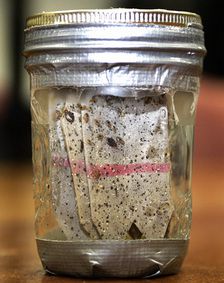 We don’t have a shortage of things to worry about these days but just in case, here’s a little number from Worthington: a bed bug infestation. A local motel had an infestation and the Daily Globe newspaper reported a private residence also had to be fumigated. Back in the day, our parents’ greatest nightmare (other than that we wouldn’t duck under our desks quickly enough when the nuclear bomb exploded over our town), was that we would be sent home with head lice. But at least the local newspaper didn’t tell the rest of the town.
We don’t have a shortage of things to worry about these days but just in case, here’s a little number from Worthington: a bed bug infestation. A local motel had an infestation and the Daily Globe newspaper reported a private residence also had to be fumigated. Back in the day, our parents’ greatest nightmare (other than that we wouldn’t duck under our desks quickly enough when the nuclear bomb exploded over our town), was that we would be sent home with head lice. But at least the local newspaper didn’t tell the rest of the town.
The description of a day in the life of a bed bug reads like a cheap sci-fi thriller:
Bedbugs are nocturnal feeders, meaning they come out at night and feed on human an animal hosts. They are similar to a mosquito in that they bite their host, suck blood, detach and then go back into hiding.
Bedbugs leave behind a bite mark on the host that may itch and cause skin irritations or lesions.
“Some will have bites that really itch,” said Kloss.
The next night or a couple of nights later, the bedbugs return for another blood meal. The population grows as adults lay eggs that hatch into nymphs.
“The opportunities for bedbugs will only increase if they have human hosts,” Kloss said.
Bedbugs can live dormant for up to six months without a human host.
Now comes the really worrisome news: Bed bugs are making a comeback because they’ve developed a resistance to poisons. Some experts say regular vacuuming take care of the problem, but many of us have developed a resistance to that.
